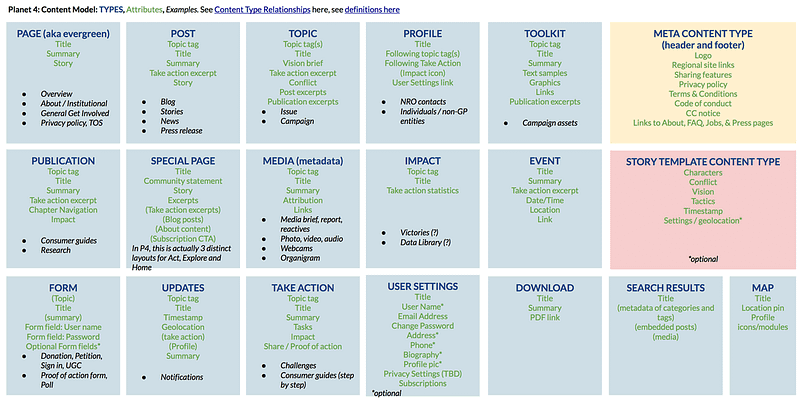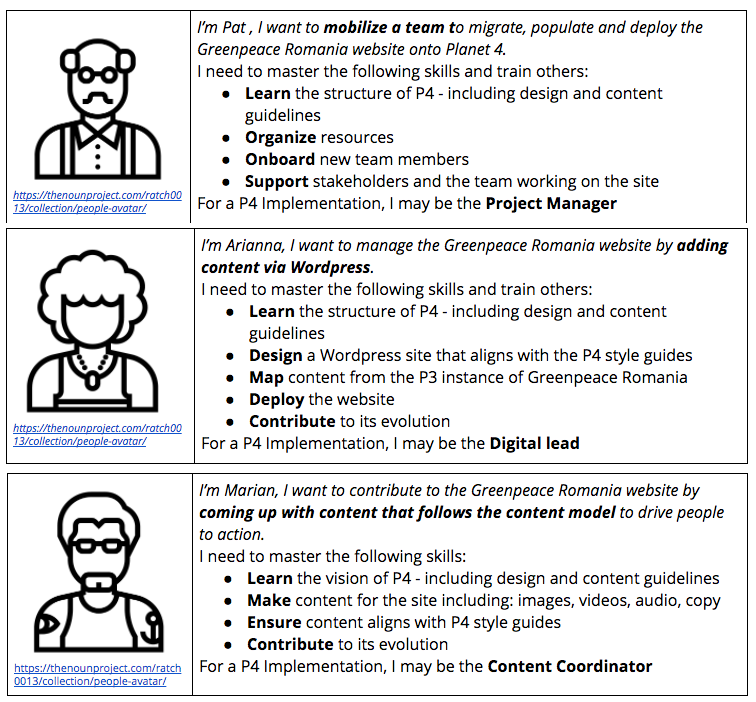cross-posted in Greenpeace’s Planet 4 publication on medium.com
With little to no fanfare, the Design Phase of the Planet 4 project has come to an end. The development of the prototype, the Greenpeace International website, is well underway and will follow the aesthetic theory we named “Shedding Light”.
The Design and Technical teams’ symbiosis

In the last few weeks, the technical and design teams have been working closely to figure out how interactions will work, how movement, flow and aesthetic properties can be matched to clean code and secure, responsive layouts.
With the help of some rockstars from Human Made, the technical team has been starting to program Shortcake content blocks. This strategy breaks up designs into pieces and parts, to allow web editors and content creators to have complete control over how Planet 4 sites look, while ensuring common Greenpeace visual elements.
Beside building the P4 front-end, the tech team has been making sure that the prototype will have essential features (like search and customizability), setting up security, testing and monitoring tools, figuring out continuous integration and, of course, preparing production environments and caching.
Finally, the tech team has been playing with a migration script to help import content from Planet 3 to Planet 4 sites.
As the P4 Development Phase continues, the tech folks will be working through the complete list of the minimum viable product (MVP) issues, and design folks will progressively iterate visuals based on the tech’s needs and requirements. The symbiosis between these two tracks has become profound.
The GPI Implementation Team

During the Concept Phase, we realized that our new engagement platform needed a Content Strategy to drive people to action. That’s the reason behind both the Planet 4 content model and the change management this new way of building content will imply. In the past weeks, the P4 team has worked tirelessly to onboard people from Greenpeace International (GPI) to this model.
Alongside specific P4 meetings, we use the Engagement Community Calls to talk about Planet 4, and how the platform will serve Greenpeace projects and campaigns. In the last call, we discussed internal communication and how we might get better at seeing, understanding and talking about the connections between our work.
Well, the Planet 4 project was mentioned as a good example of cross-departmental teams, since most members have responsibilities outside of the project. Because of the diversity of people who will use Planet 4, we have been interacting with folks from Directors to Storytellers, from Campaigners to Techies across the organization, and given the nature of the prototype (http://www.greenpeace.org/international/en/), such global collaboration is becoming crucial.
We’re happy to say that an implementation team has been put in place. These people will be responsible for editing and writing the content we will launch with the international site, but also to streamline the methodology and support multiple implementations in 2018.
Feedback and Analysis on the prototype
We often forget about an important aspect of collaboration: feedback. We all should ask for feedback from people who work in different areas, and we should all be generous in giving feedback.
To gather feedback from the global community on the Greenpeace.org prototype, the Planet 4 team is working on an intensive and thorough evaluation plan, to identify, prioritize and diagnose eventual usability issues. Community-led testing will enable recommendations and improvements in the P4 design, propose activities for future iterations and quantify improvements.
A variety of methods will be used including on-site self-reported feedback, unmoderated remote user testing, moderated in-person user testing with our webbies, as well as using tools like heat maps and analytics.
The Planet 4 Handbook

A key factor to determine the success of Planet 4 is the ability of Greenpeace National and Regional Offices (NROs) to implement the software with a light touch from the core team. Colleagues will be able to start preparing their content and project teams for the implementation of Planet 4, and think about how to use this engagement platform to achieve campaign goals.
An easy to use and complete set of documentation that guides teams through all the ins and outs of our new engagement platform is all that’s needed.
The Planet 4 Handbook will contain all resources to learn, implement, master and improve the tool. It will gather links and guides, templates and training documentation to help the community get through preparation, deployment and launch of Planet 4 websites.
The Handbook will be hosted on its own install of Planet 4, and it is currently under construction in a growing and changing document.
Planet 4 is coming: the prototype launch, the pilot’s on-boarding and the implementation plan
You can of course read the detailed Prototype Development Phase Plan, but the the “next big thing” is the launch of the Planet 4 prototype, planned for November.
Beside this huge milestone, the team will on-board Greenpeace Greece, the Planet 4 Pilot office, build the mechanisms to gather and analyse feedback, test and improve implementation processes, support one global campaign site to migrate to Planet 4 and prepare both the Handbook and the 2018 global implementation plan.
Get ready. Planet 4 is coming.